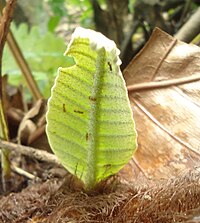Tritrophic interactions in plant defense

Okay kiddo, you know how plants are very good at defending themselves from being eaten by animals? Well, there are some important things that happen between the plant, the herbivore (the animal that eats the plant), and another animal that eats the herbivore, which we call the predator.
Let me explain it a bit more, using an example of a caterpillar eating a plant. So, when the caterpillar starts to munch on the plant, the plant can release certain chemicals or toxins that make the caterpillar feel sick, or even stop it from growing. This is a very good way for the plant to protect itself from being eaten.
But, sometimes the caterpillar can become resistant to these plant defenses. That means that the plant's defense doesn't work as well anymore, and the caterpillar can keep eating and growing. Uh-oh.
But wait, there's more! The third part of this interaction is the predator - let's say it's a bird that eats the caterpillar. Now, this bird might start to choose the caterpillars that have been eating the plant that's really good at defending itself. Why? Because the caterpillars that have become resistant to the plant's defense might not taste as good, or might be weaker or slower, making it easier for the bird to catch them.
So, by having predators that eat the herbivores that feed on them, plants can indirectly defend themselves against herbivores that have become resistant to their direct defenses. It's like the plant has a team of helpers to protect it, even when its own defense isn't enough.
Pretty cool, huh?
Let me explain it a bit more, using an example of a caterpillar eating a plant. So, when the caterpillar starts to munch on the plant, the plant can release certain chemicals or toxins that make the caterpillar feel sick, or even stop it from growing. This is a very good way for the plant to protect itself from being eaten.
But, sometimes the caterpillar can become resistant to these plant defenses. That means that the plant's defense doesn't work as well anymore, and the caterpillar can keep eating and growing. Uh-oh.
But wait, there's more! The third part of this interaction is the predator - let's say it's a bird that eats the caterpillar. Now, this bird might start to choose the caterpillars that have been eating the plant that's really good at defending itself. Why? Because the caterpillars that have become resistant to the plant's defense might not taste as good, or might be weaker or slower, making it easier for the bird to catch them.
So, by having predators that eat the herbivores that feed on them, plants can indirectly defend themselves against herbivores that have become resistant to their direct defenses. It's like the plant has a team of helpers to protect it, even when its own defense isn't enough.
Pretty cool, huh?
